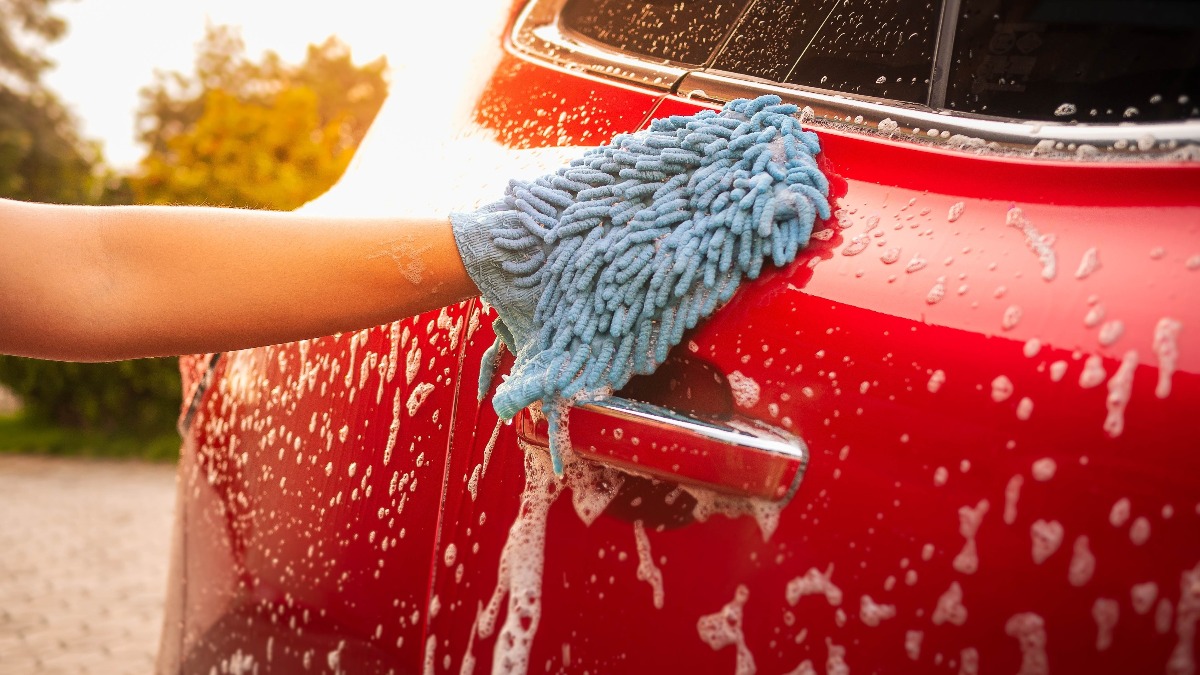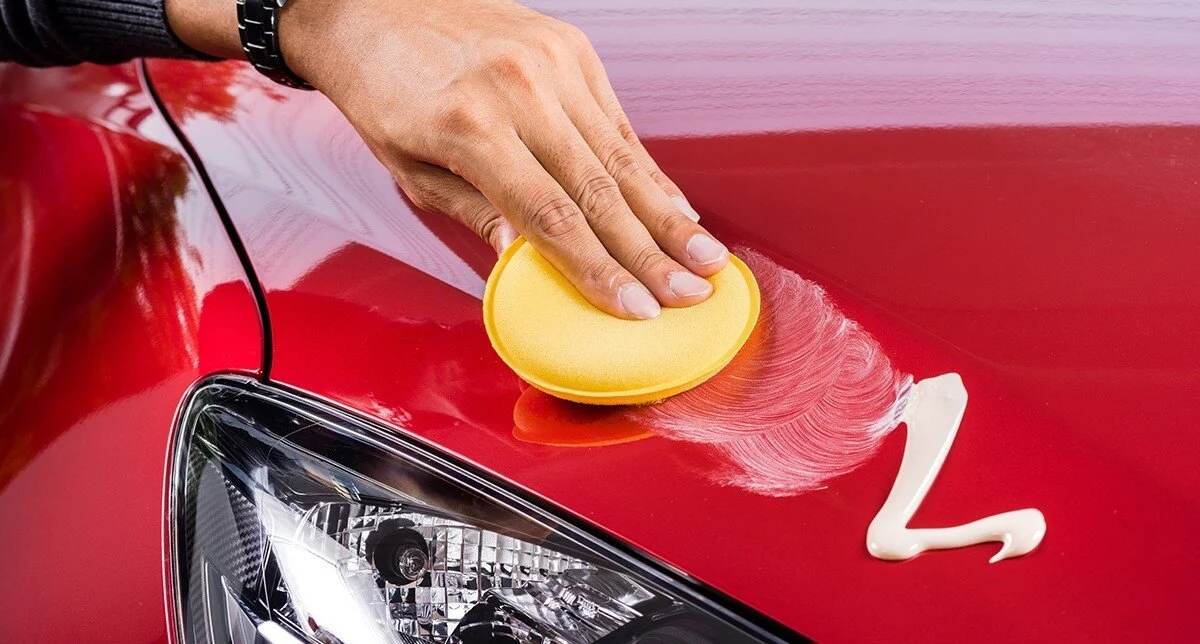Maintaining your car’s paintwork is essential for both its visual appeal and condition. This comprehensive guide will show you the steps to properly care for your car’s paint, ensuring it stays in pristine condition for as long as possible.
Your car’s paint is made up of multiple layers, which include the primer, base coat, and clear coat.
The clear coat is the outermost protective layer that shields the base coat from environmental damage, such as UV rays, salt, and bird droppings.
Understanding the structure of your car’s paintwork is vital for determining the correct care, suitable cleaning products, and maintenance procedures.
The Importance of Proper Paintwork Maintenance
Regular maintenance of your car’s paint not only improves its appearance but also helps protect it from damage that could lead to expensive repairs.
Proper care ensures the paint remains intact, preventing issues like fading, chipping, and peeling. It also helps preserve the vehicle’s resale value.
To maintain your car’s paintwork, regular washing and waxing are highly recommended.
Washing removes dirt and grime, which can cause scratches, while waxing provides a protective layer that repels water and helps guard against UV damage.
If you detect any damage to your car’s paint, such as scratches or chips, it’s important to address them quickly. Ignoring these issues can result in rust and further harm to the metal beneath the paint.
Minor damage can often be repaired with touch-up paint, but more extensive issues may require professional repainting.
Understanding the composition of your car’s paintwork and how to maintain it is critical for keeping it looking its best while protecting it from further harm.
Whether your vehicle has solvent-based or water-based paint, consistent washing, waxing, and prompt repair of damage are essential for preserving both the car’s appearance and its value.
Preparing Your Car for Paintwork Care
Before starting the maintenance process, it’s important to prepare your car properly. Follow these essential steps to ensure your car is ready for paintwork care:
Washing Your Car
Washing your car is the first step in paintwork care. Use a high-quality car wash shampoo and, ideally, the two-bucket method to minimize the risk of scratches.
Begin by rinsing your car with a pressure washer, starting at the top and working your way down. Then, use the two-bucket method: one bucket for soapy water and the other for rinsing your wash mitt.
This method prevents dirt and debris from being reintroduced to the car’s surface. After shampooing, rinse your car thoroughly to remove all soap residue, as leftover soap can cause water spots and other issues.
When washing, don’t forget the details. Use a soft-bristled brush to clean the wheels and tires, and clean the door jambs and other hard-to-reach areas where dirt and grime accumulate.
Drying Your Car
After washing, it’s time to dry your car. Use a soft microfiber towel to dry the surface completely. Avoid towels made from rough fabrics or those containing chemicals that could damage the paint.
Thorough drying is crucial to prevent water spots from forming. If you notice any water spots, you can use a detailing spray or quick detailer to remove them.
Inspecting for Damage
Once the car is washed and dried, inspect the paintwork for any signs of damage.Look for chips, scratches, or swirl marks that may have been caused by rocks, debris, or improper washing techniques.
Addressing these issues before proceeding with further care helps prevent the damage from worsening.If damage is found, you can use touch-up paint or a scratch remover to fix minor issues.

Claying Your Car
Claying your car is an optional but beneficial step that removes contaminants washing alone cannot. Clay bars are designed to lift substances like tree sap, tar, and other debris that can bond to the paint over time.
To use a clay bar, apply a lubricant to the surface and gently rub the clay over the paint. It’s important to use a clean clay bar for each section of the car to avoid transferring contaminants from one area to another.
Preparing your car for paintwork care is a vital part of maintaining its appearance and ensuring protection against damage. Following these steps will help keep your car looking great for years.
Protecting Your Car’s Paintwork
Keeping your car’s paintwork in excellent condition helps maintain its value and aesthetic appeal.
However, protecting it from the elements can be difficult, especially if you frequently drive in harsh conditions or park outside. Here are some methods to protect your car’s paintwork:
Applying Wax or Sealant
Waxing your car is one of the most effective ways to safeguard its paint. A wax coating forms a protective barrier that shields the car from UV rays, oxidation, and other environmental damage.
It also gives the paint a glossy finish that enhances the car’s appearance.
Use a foam applicator pad to apply the wax, and remove excess with a microfiber towel. For the best results, apply wax or sealant every three to four months.
Using Paint Protection Film
For those who often drive on rough roads or highways, paint protection film is a great solution.
This transparent film helps protect the car’s paint from chips and scratches, particularly on high-impact areas like the front bumper, hood, and side mirrors.
While paint protection film is effective, it’s recommended to have it professionally installed to ensure proper application.
Choosing the Right Car Cover
A car cover is an excellent way to shield your vehicle from dust, bird droppings, and debris that could damage the paint.
Look for covers made from breathable fabric to prevent moisture buildup, which could lead to rust. Make sure the cover fits your car properly to avoid gaps that might allow debris to enter.
Protecting your car’s paintwork is key to maintaining both its appearance and value.
By using wax or sealant, applying paint protection film, and selecting the right car cover, you can protect your car from the elements and keep it looking like new.
Repairing Minor Paintwork Damage
Even with the best protection, paintwork damage can still occur. Fortunately, you can fix minor damage yourself by following these steps:
Fixing Scratches and Chips
For small scratches and chips, use touch-up paint that matches your car’s color. Clean the affected area and apply the paint with a small brush or pen. Let it dry, then sand lightly before applying a clear coat for a smooth finish.
Removing Swirl Marks
Swirl marks are fine scratches that often appear as circular lines on the paint. To remove them, use a swirl remover product applied with a microfiber towel.
Work in small sections, let the product dry, and then buff it off to restore the smoothness of the paint.
Addressing Oxidation and Fading
Oxidation and fading occur when the clear coat layer of your car wears down.
To address this, apply a polishing compound with a foam pad to remove the faded layer and restore the shine. Finish by applying wax to protect the surface and give it a glossy finish.
Caring for your car’s paintwork is an excellent way to preserve its appearance and ensure it remains in top condition.
By following the guidelines in this guide, you can keep your car looking great and help maintain its resale value for years to come!

